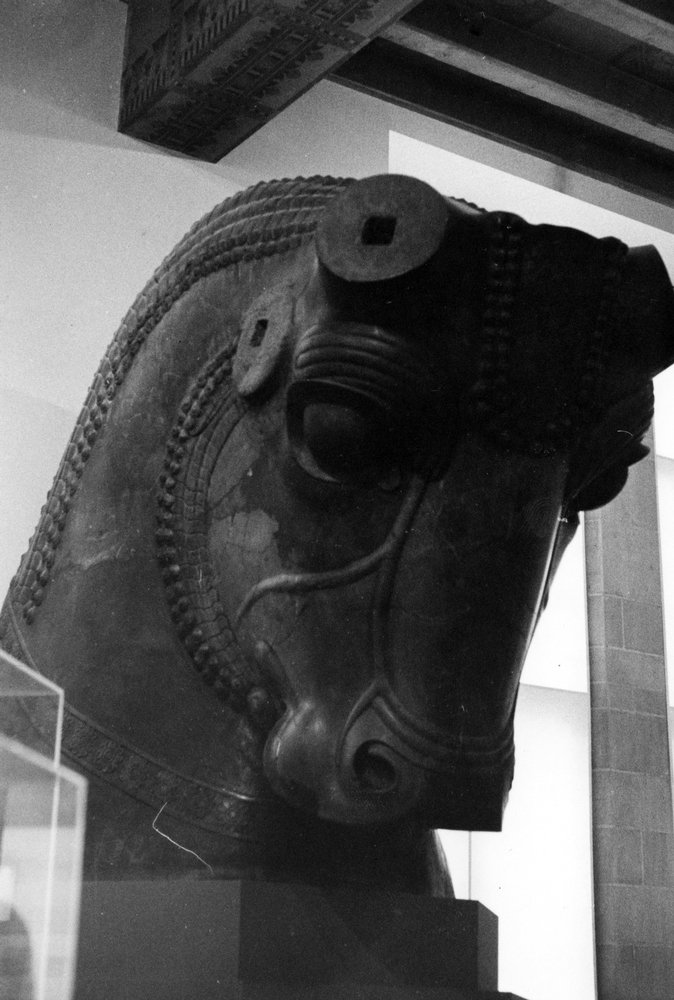Colossal Bull Head
The site of Persepolis was a great dynastic center of the Achaemenid Empire and is located approximately 400 miles south of present-day Tehran in the Southwestern Province of Fars. The OI excavated there from 1931-39. This Colossal Bull Head was discovered at Persepolis during the 1932-33 season by OI archaeologists under the direction of Ernst Herzfeld. The building to which it belonged, the Hundred-Column Hall, was built during the reigns of Xerxes and Artaxerxes (485-424 BC). This figure is one of a pair of guardian bulls that flanked the hall’s entrance and its features are characteristic of the Achaemenid court style with its curved, smooth face, sharp-edged eyelids, and tightly curled hair. The other bull head is still at the site of Persepolis where it has been restored on top of its body at the entrance to the Hall. Made of limestone and weighing approximately 10 tons, the OI’s Colossal Bull Head was brought to Chicago in fragments. It underwent a significant amount of restoration including the top of the head, horn bases, both eyes, minor sections around the mouth and all of the neck. It was restored on site by Donato Bastiani and reconstruction was supervised by the second director of the OI, John A. Wilson.

